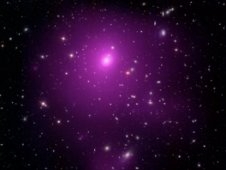Summary
Massive early-type galaxies (ETGs) are "red and dead" systems mainly composed of old and metal-rich stellar populations. In a cosmological context, present-day ETGs are believed to be the remnants of a complex stellar mass assembly history marked by several mergers, which are the consequence of the underlying hierarchical assembly of their host dark matter halos.
In this talk, I will deal mainly with the merger-driven evolution of ETGs. Firstly, I will illustrate a comparison between observed ETGs from the MaNGA survey and simulated galaxies from the IllustrisTNG cosmological simulation suite. The aim of this study is to provide an interpretative scenario of the stellar mass assembly history of observed present-day ETGs, comparing the radial distributions of their stellar properties with those of simulated galaxies, in which it is possible to disentangle the contribution of stars formed in situ (i.e. within the main progenitor galaxy) and stars formed ex-situ (i.e. in other galaxies) and then accreted through mergers.
Then, I will describe how the scaling relation between the stellar mass and stellar velocity dispersion in ETGs evolves across cosmic time. Specifically, by extending the results of Cannnarozzo, Sonnenfeld & Nipoti (2020), I model the aforementioned relation through a Bayesian hierarchical approach, considering ETGs with log(M∗/M⊙) > 9 over the redshift range 0 ≲ z ≲ 4. Together with a new characterization of the relation, I reconstruct the back-in-time evolutionary pathways of individual ETGs on the stellar mass-velocity dispersion plane to answer the question “how did high-redshift ETGs assemble through cosmic time to reach the functional form of the relation in the present-day universe?“
